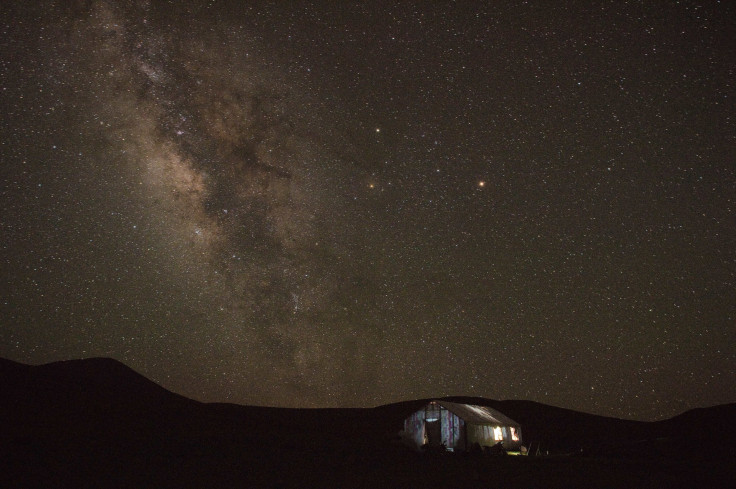How Did The Milky Way Form? New Chronographic Map Provides Answers

How did the Milky Way — a galaxy 100,000 light-years across and roughly 13.2 billion years old — form? For that matter, how exactly does any galaxy — a gigantic swirling mass of gas, dust, stars and planets — form?
These are the questions that a team of researchers from the University of Notre Dame sought to answer by creating a chronographic map of the Milky Way. The map, based on data gathered by the Sloan Digital Sky Survey, reveals the approximate age of over 130,000 stars in the Milky Way’s halo — a superhot cloud of dust that surrounds our galaxy.
The map, described in a study published in the journal Nature Physics, suggests that our galaxy formed by merging and accretion of several small mini-halos containing stars and gas.
“We haven’t previously known much about the age of the most ancient component of the Milky Way, which is the Halo System,” lead author Daniela Carollo, an astrophysicist at the University of Notre Dame, said in a statement released Tuesday. “But now we have demonstrated conclusively for the first time that ancient stars are in the center of the galaxy and the younger stars are found at longer distances. This is another piece of information that we can use to understand the assembly process of the galaxy, and how galaxies in general formed.”
According to the researchers, the first stars were formed by accretion of small clouds of primordial material, which had just enough material for one or two generations of stars. After they had run out, they merged with other small clouds and were pulled by gravity toward the centre of the galaxy. In contrast, larger and more massive clouds retained enough material to form several generations of stars before merging.
“The colors, when the stars are at that stage of their evolution, are directly related to the amount of time that star has been alive, so we can estimate the age,” co-author Timothy Beers said in the statement. “Once you have a map, then you can determine which stars came in first and the ages of those portions of the galaxy. We can now actually visualize how our galaxy was built up and inspect the stellar debris from some of the other small galaxies being destroyed by their interaction with ours during its assembly.”
In addition to providing vital clues to the Milky Way’s birth and evolution, this technique can — once enough data is gathered — be used to ascertain how even the most distant galaxies formed.
© Copyright IBTimes 2025. All rights reserved.






















